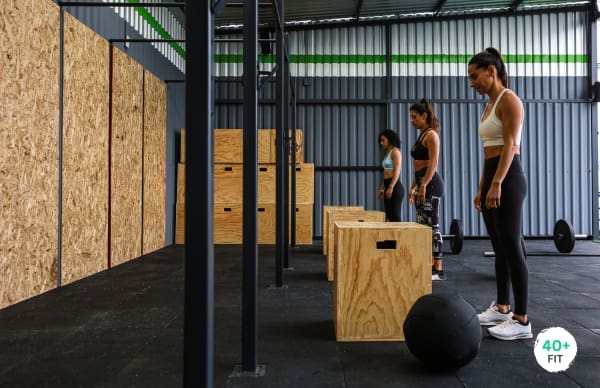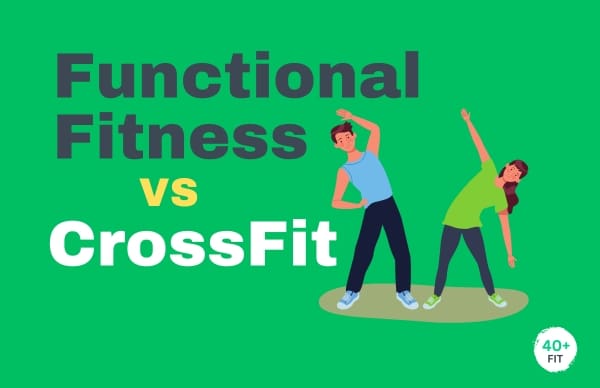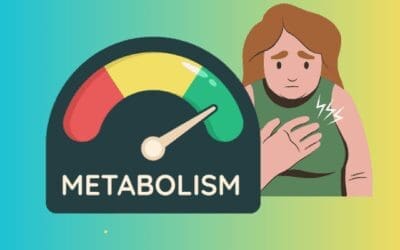As fitness trends continue to evolve, two terms that often get thrown around are functional fitness and CrossFit. But are they the same thing? If you’re over 40 and looking to improve your health, understanding the difference between these two can be crucial in helping you find the right program for your needs.
In this article, I’ll break down the similarities and differences between functional fitness and CrossFit, highlight the unique benefits for those over 40, and provide practical advice on choosing the best option for your fitness goals.

What is Functional Fitness?
Functional fitness is a type of exercise focused on improving your ability to perform everyday activities with greater ease. The goal is to strengthen muscles in ways that mimic real-life movements, such as lifting groceries, climbing stairs, or bending down to pick something up. It emphasizes core strength, balance, flexibility, and coordination, and is designed to enhance your overall quality of life.
Key Components of Functional Fitness
- Core stability: Strengthening your abdominal and back muscles to prevent injury.
- Balance and coordination: Essential for preventing falls as you age.
- Range of motion: Improving flexibility to stay mobile and limber.
- Strength: Building muscles for everyday tasks like lifting and carrying.
For individuals over 40, functional fitness offers a low-impact, highly adaptable approach to staying active, with exercises that can be modified to suit any fitness level.
What is CrossFit?
CrossFit is a branded form of high-intensity interval training (HIIT) that combines weightlifting, cardio, gymnastics, and bodyweight exercises in a constantly varied workout. The workouts, known as WODs (Workouts of the Day), are often done in group settings and are designed to push you to your limits in a short amount of time.

Key Components of CrossFit
- High-intensity: Short bursts of intense effort followed by brief periods of rest.
- Group-based: Most workouts are done in a class setting with a coach.
- Competitive: Many CrossFitters track their performance and aim to beat previous times or scores.
- Olympic weightlifting: Incorporating technical lifts like snatches and cleans.
While CrossFit has grown in popularity, especially among younger people, its intensity can sometimes pose challenges for individuals over 40, particularly those new to fitness or dealing with age-related issues such as joint pain or mobility restrictions.
Is Functional Fitness the Same as CrossFit?
Though they share some similarities, functional fitness and CrossFit are not the same. They both focus on improving overall fitness, but their methods and goals can differ significantly.
Similarities Between Functional Fitness and CrossFit
- Multi-joint Movements: Both functional fitness and CrossFit emphasize movements that engage multiple muscle groups, mimicking real-world actions.
- Strength Building: Both forms of exercise aim to build strength that enhances daily life.
- Varied Exercises: Neither approach relies on repetitive exercises; the routines change frequently to keep your body adapting.
Differences Between Functional Fitness and CrossFit
- Intensity: Functional fitness tends to be lower in intensity and can be scaled to match any fitness level, while CrossFit is more high-intensity and often focuses on pushing limits.
- Goals: Functional fitness is more about improving everyday function, while CrossFit has a competitive element, with an emphasis on improving performance metrics.
- Complexity: CrossFit often incorporates complex Olympic lifts that require specific skills and practice, whereas functional fitness focuses more on basic, practical movements.
- Risk of Injury: The high-intensity nature of CrossFit, combined with fast-paced lifting, can sometimes lead to injury, especially if you have joint issues or limited mobility. Functional fitness is typically lower risk and gentler on the body.
Which Is Better for People Over 40?
If you’re over 40 and wondering which approach is better for your body, the answer largely depends on your goals, fitness level, and any underlying health conditions. Here’s a breakdown of how to choose between the two:
Functional Fitness for Over 40s
Functional fitness is particularly well-suited for older adults because it’s adaptable, low-impact, and focused on improving real-world movements. It’s a great option for those dealing with joint pain, reduced flexibility, or a desire to maintain independence as they age.
Why choose functional fitness?
- Lower risk of injury: Exercises can be modified to suit your abilities and limitations.
- Focus on longevity: It’s about maintaining and improving quality of life, not about competitive performance.
- Safe for beginners: If you’re just starting out or haven’t exercised in a while, functional fitness offers a gentler path to getting back in shape.
CrossFit for Over 40s
CrossFit can be effective for older adults if done with caution and proper scaling. However, it’s important to communicate with coaches about any physical limitations you may have to avoid injury. For those with a competitive spirit or those already in good shape, CrossFit can be a way to push boundaries and test your fitness limits.
Why choose CrossFit?
- High energy environment: Group workouts and timed challenges can keep you motivated.
- Strength and cardio in one: Combines both strength and cardiovascular fitness in every workout.
- Adaptable: With the right coach, CrossFit workouts can be scaled to your fitness level.
Functional Fitness vs. CrossFit: Direct Comparison
| Criteria | Functional Fitness | CrossFit |
|---|---|---|
| Intensity | Moderate, adaptable | High-intensity, competitive |
| Goal | Improve daily movement and function | Increase fitness performance, often in a competitive setting |
| Risk of Injury | Lower, due to less intense movements | Higher, especially with fast-paced lifting |
| Best For | People over 40 looking for longevity and joint health | Active individuals wanting a challenge |
| Time Commitment | Flexible, with no need for long workouts | Typically involves 1-hour classes |
| Community | Less group-focused, often done solo or in personal training | Strong community aspect, group-driven workouts |
How to Choose Between Functional Fitness and CrossFit
- Assess Your Goals: Are you looking to improve everyday movements or challenge your fitness performance?
- Consider Your Current Fitness Level: If you’re new to fitness, functional fitness might be a better, gentler start. If you’re already active, CrossFit might offer the intensity you seek.
- Evaluate Injury Risk: If you have joint issues or are prone to injury, functional fitness can help strengthen your body without the high risks of CrossFit.
- Talk to a Coach: Whether you’re interested in CrossFit or functional fitness, speaking with a coach who understands your specific needs and limitations is essential.
Find What Works for You
So, is functional fitness the same as CrossFit? Not quite. While both offer unique benefits, they cater to different goals and fitness levels. For those over 40, functional fitness often provides a safer, more adaptable approach that emphasizes long-term health and functional movement. CrossFit, while more intense, can be modified for older adults looking for a challenge but requires a cautious approach.
If you’re still unsure which is best for you, consider scheduling a no-obligation coaching call for personalized advice. Remember, the best fitness routine is one that suits your body, your goals, and your lifestyle.






